You know the feeling. You are already overwhelmed with your to-do list. And then a huge problem falls into your lap and forces you to stop everything you’re doing and give it all your attention.
But there’s an even bigger problem. You know it needs to be fixed, and you have no idea where to start – even if you had the time.
Everyone has had this happen to them. It’s frustrating when you don’t know what to do and there’s a time crunch.
But there is hope! We have a proven method that works. If used properly, you won’t be paralyzed by problems ever again. The method we use gives you tools and techniques that work – no more of that “just think outside the box” advice.
I’m going to give you a sneak peek into the main concepts of how we teach people to overcome problem solving. I will introduce you to the primary steps that you need to follow to tackle major issues:
1. Frame your problem. I mean it. This sucker needs a name so you can stare it right in the face and tell it who’s boss. You need to know exactly what the problem is that you are facing or you won’t be able to address it in it’s entirety. File it down to it’s simplest form.
Example: Sales dropped from 100 to 80 per month. Customer service complaints went up 25%.
However, this is the simplified, chopped up, mushy baby food version of problem solving. There is a lot more real meat to it that is crucial to understand. But, once you fully grasp it, there are endless uses and it can be applied to many different areas.
You deserve to not have to worry about problems during your day. Stop spending so much time on them! Learn how to solve problems quickly and effectively, so that the solutions stick. Click here to learn more about it.
If you want to become a master problem solver, sign up for our course. It will help you solve problems and reduce stress. Plus, it may even get you noticed and help your career take off.
Take this information and try it out the next time you are faced with a problem – and let us know how it helped you!
If you have stories to share or further questions, we would love to hear from you. Also, if you are sensing some issues in your improvement program, please contact us! We would love to help. We conduct assessments, give recommendations, and work with clients to get their initiatives back on track.
We are always trying to improve too; constructive feedback is always welcome. Please comment or email so I can respond back to any questions you may have. Feel free to email me any time at molly.thorvilson@collaborative-impact.com.
Thank you for reading!
Molly



